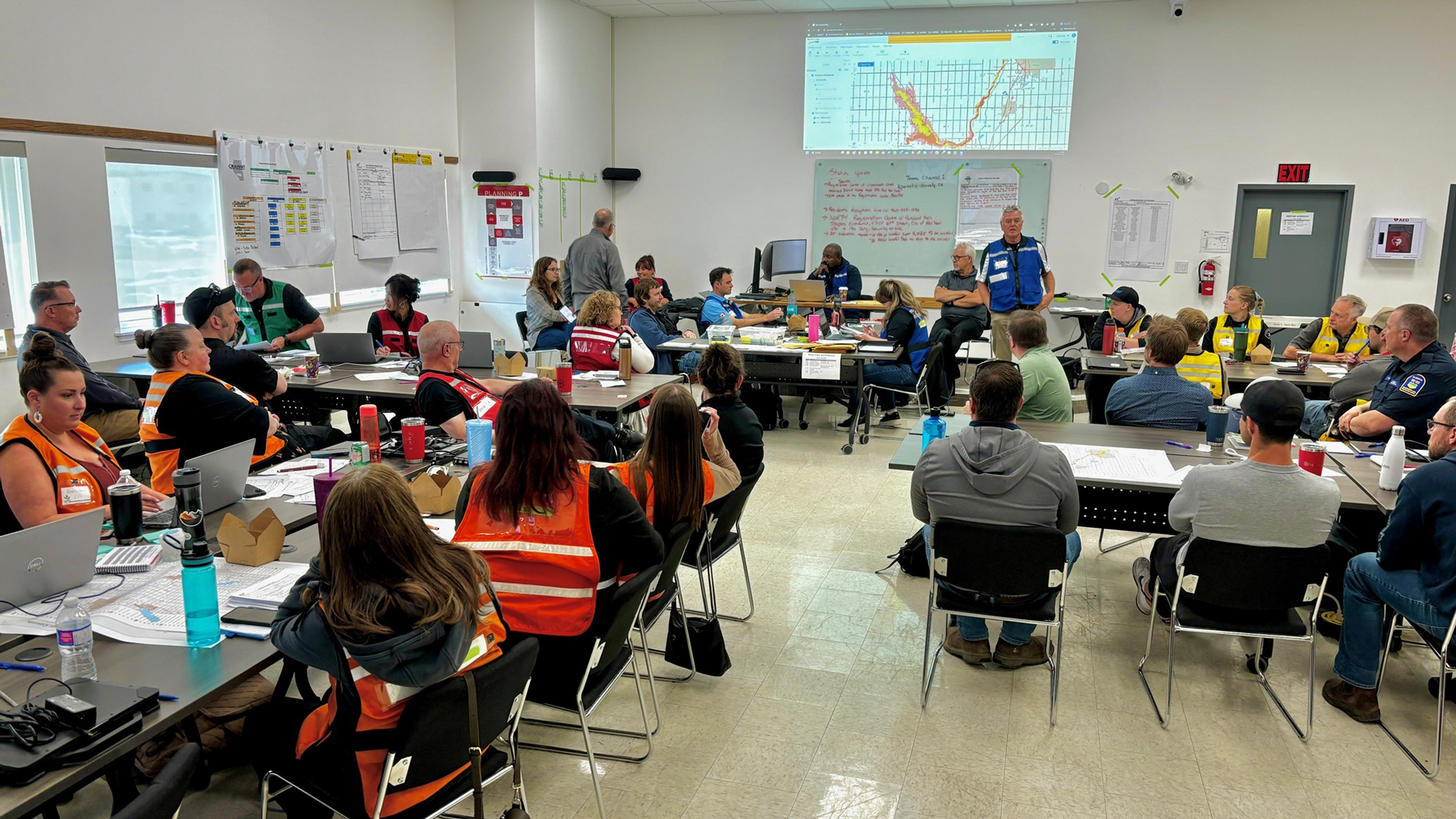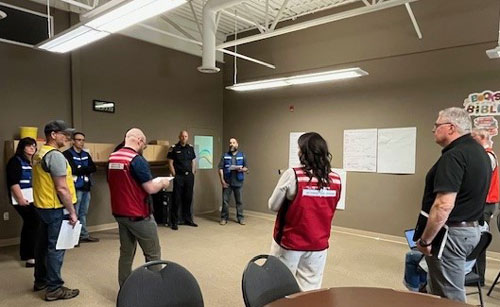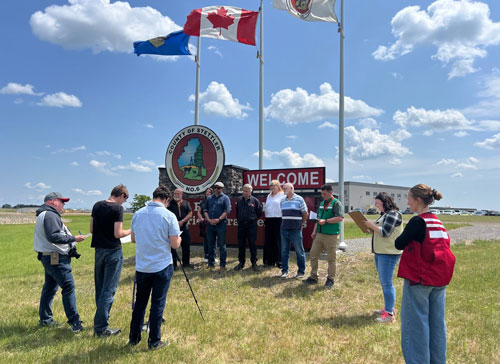Central Alberta Municipalities Unite in Emergency Response Exercise
June 26, 2025
Simulated Dickson Dam breach tests regional coordination and readiness

From satellite phones to mock press conferences, Central Alberta municipalities put their skills to the test on June 18 in a large-scale emergency training exercise titled “Cascade 2025” where municipal staff, first responders and utility providers came together to prepare for the worst-case scenario.
 The fictional scenario—a full breach of the Dickson Dam resulting in significant downstream flooding and widespread utility disruption—united more than 120 participants from multiple municipalities and agencies, including the City of Red Deer, Red Deer County, County of Stettler, Kneehill County, and the Central Region All Hazards Incident Management Team (CRAHIMT). Supported by a $22,014 Emergency Management Preparedness Program (EMPP) grant from the provincial government, the training was a major milestone in regional emergency planning.
The fictional scenario—a full breach of the Dickson Dam resulting in significant downstream flooding and widespread utility disruption—united more than 120 participants from multiple municipalities and agencies, including the City of Red Deer, Red Deer County, County of Stettler, Kneehill County, and the Central Region All Hazards Incident Management Team (CRAHIMT). Supported by a $22,014 Emergency Management Preparedness Program (EMPP) grant from the provincial government, the training was a major milestone in regional emergency planning.
“This kind of cross-jurisdictional training is invaluable,” said Carol Lind, Emergency Management Coordinator for the City of Red Deer. “Emergencies don’t respect borders, so by working together across municipalities and agencies, we strengthen our ability to respond cohesively and effectively—which will ultimately help us protect lives, property and critical infrastructure.”
Realistic Scenarios, Real-Time Decision-Making
Each participating municipality designed a unique but coordinated approach, reflecting both local capacities and shared objectives.
 The City of Red Deer deployed both an Incident Command Post (ICP) and Emergency Coordination Centre (ECC), engaging 50 participants including Alberta Health Services, RCMP, CRAHMIT and 44 City employees. The team successfully completed Incident Action Plans (IAP) for both an Incident Command Post and Emergency Coordination Centre, establishing a Joint Information System with Red Deer County, and also tested backup communications like satellite phones and Starlink.
The City of Red Deer deployed both an Incident Command Post (ICP) and Emergency Coordination Centre (ECC), engaging 50 participants including Alberta Health Services, RCMP, CRAHMIT and 44 City employees. The team successfully completed Incident Action Plans (IAP) for both an Incident Command Post and Emergency Coordination Centre, establishing a Joint Information System with Red Deer County, and also tested backup communications like satellite phones and Starlink.- Over at Stettler County, 46 regional staff set up an Emergency Reception Centre at the Stettler Community Hall while their Incident Command Post managed injects—simulated problem scenarios. Mock press conferences, evacuations and tours for elected officials added realism to the full-day simulation. Organizers called it a “strong success”, as it provided valuable opportunities for participants to gain experience, as well as tested regional partnerships with Clearview School Division, Starland County, AHS, RCMP and Alberta Transportation.
- Kneehill County focused on internal capacity-building with a tabletop version of the exercise. Sixteen staff members ran through ICS (Incident Command System) roles and developed an IAP, while Council practiced their role in declaring a state of local emergency. The smaller-scale approach helped build internal confidence and laid the groundwork for a full-scale exercise next year.
- Meanwhile, Red Deer County’s team operated from its Protective Services Station and successfully integrated 19 external agencies—including RCMP, EPCOR, AHS, schools and multiple utility providers—into a high-functioning ICP. A well-integrated Emergency Social Services team responded to simulated human-impact incidents, showcasing the critical role of wraparound support services in a disaster response.
Across all jurisdictions, the overarching goals were consistent: strengthen inter-agency communication, test the “Planning P” process (a standardized emergency response planning method), and refine real-time decision-making in complex, evolving scenarios.
“Emergency planning isn’t just an administrative checkbox—it’s what ensures our communities can act quickly, communicate clearly, and support each other when every second counts,” said Carol. “By preparing together, we’re building more than just emergency plans. We’re building trust and teamwork across communities, which is critical when the pressure is real.”